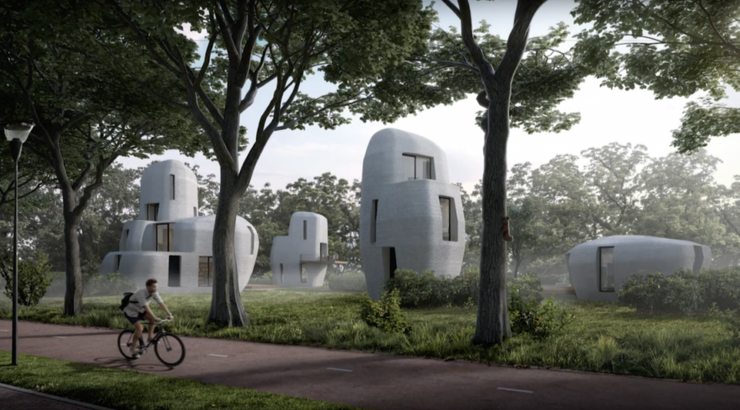With 3D-printing tech, hemp is going to become even more of a realistic alternative to traditional materials…
More architects and builders are turning to hemp as a sustainable material to use when building homes, and with 3D-printing technology, hemp is going to become even more of a realistic alternative to traditional materials, which are not environmentally friendly and in very short supply.
An Australian based biotechnology company called Mirreco, has recently unveiled plans for 3D printed hemp homes. The company cites environmental concerns as some of their primary motivations.
The company has developed hemp panels that can be used in both residential and commercial building projects. Furthermore, the panels can be manufactured directly through a 3D-printer, and then used to build the structure of the home. Mirreco says that the panels are “structurally sound, easy to produce, and provide superior thermal performance.”…
A statement from the company said, “Just imagine living and working in buildings that are 3D-printed and available to move into in only a matter of weeks. The floors, walls and roof will all be made using hemp biomass, and the windows will incorporate cutting-edge technology that allows light to pass through glass where it is converted into electricity.”
Mirreco touts the carbon-neutral status of their building process and materials, but there are other ways that hemp homes can be beneficial or the environment. Beyond the concerns of greenhouse gas emissions, there is simply not enough sand to sustain the increasing demand for conventional concrete. This poses yet another environmental crisis, as the specific type of sand needed for concrete is often harvested from riverbeds, which destroys ecosystems and threatens the biodiversity of plants, fish, and animals.
It isn’t something that people think about often, but sand is the second most used natural resource in the world, surpassed only by water. This high demand often creates an incentive for criminal cartels to fight over resource-rich territories in the developing world, disrupting the local ecosystem and terrorizing civilians who attempt to get in their way. If the construction industry were to fully adopt a renewable alternative like hemp, it could radically improve some of these social, environmental and economic concerns.
Hemp can actually provide sustainable solutions in many other industries as well. A new study has suggested that hemp batteries could be more powerful than graphene or lithium, which could be a major breakthrough, considering how much toxic pollution comes from disposed batteries.
It is important to note that Mirreco is not the first company to build a house out of hemp, that sort of thing has been happening for a few years now. Mirreco is merely the first to use 3D printing with these materials, at this scale (article via TruthTheory).
If you like this idea, be sure to share it with your friends and inspire someone you know. Anything becomes possible with just a little inspiration…

